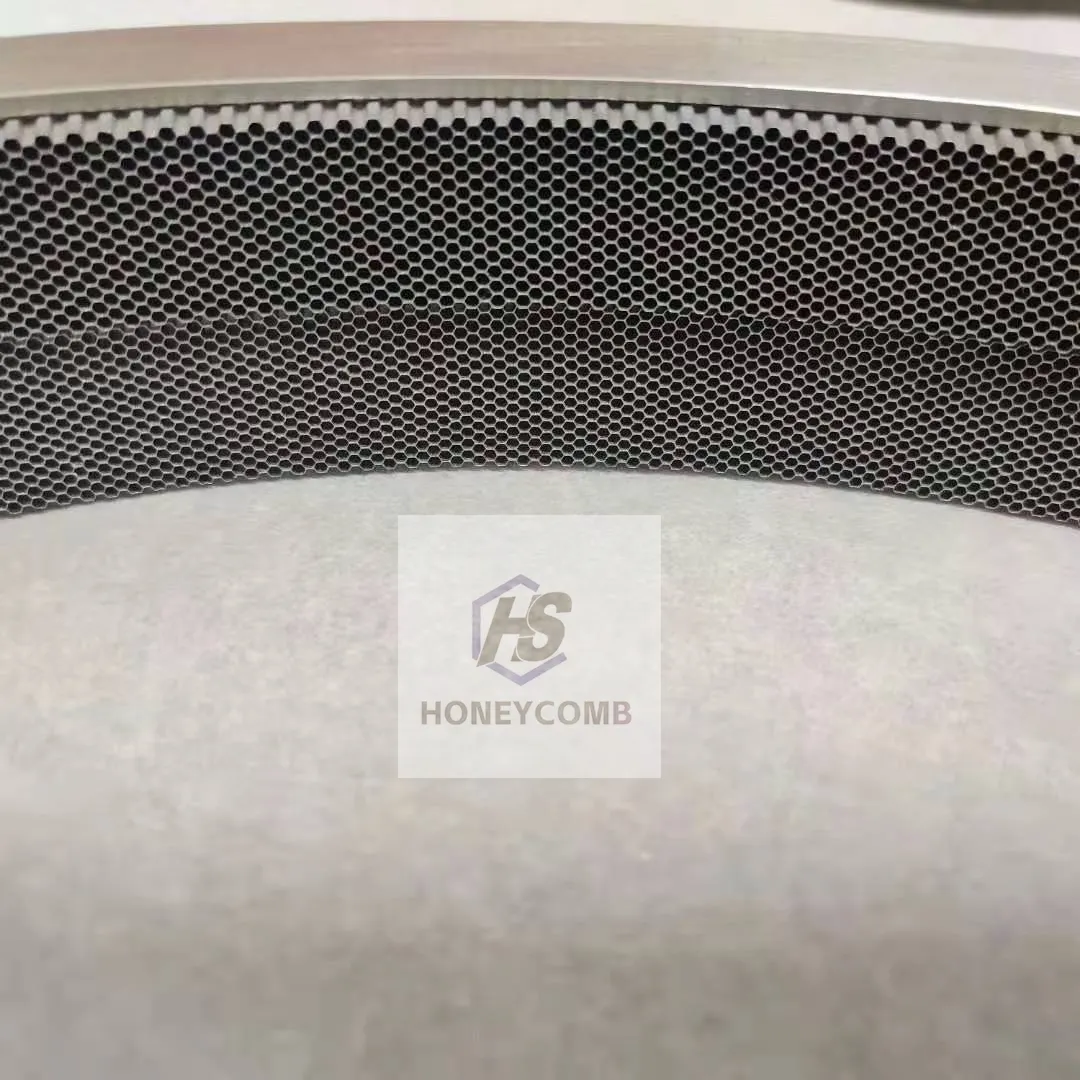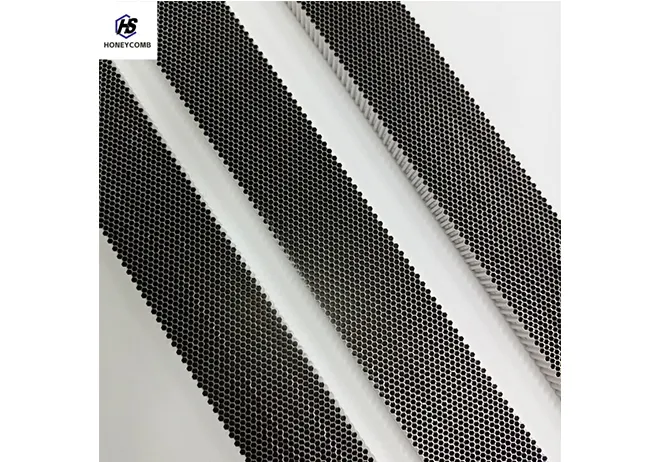
- Afrikaans
- Albanian
- Amharic
- Arabic
- Armenian
- Azerbaijani
- Basque
- Belarusian
- Bengali
- Bosnian
- Bulgarian
- Catalan
- Cebuano
- China
- China (Taiwan)
- Corsican
- Croatian
- Czech
- Danish
- Dutch
- English
- Esperanto
- Estonian
- Finnish
- French
- Frisian
- Galician
- Georgian
- German
- Greek
- Gujarati
- Haitian Creole
- hausa
- hawaiian
- Hebrew
- Hindi
- Miao
- Indonesian
- Italian
- Japanese
- Javanese
- Malay
- Persian
- Portuguese
- Punjabi
- Russian
- Spanish
- Swahili
- Telugu
- Vietnamese

Aluminum 5052 Honeycomb Core Lightweight, High-Strength Solution
- Structural advantages of Aluminum 5052 honeycomb core technology
- Performance comparison: Leading manufacturers and material specifications
- Customization processes for specialized industrial requirements
- Thermal and mechanical properties with supporting technical data
- Implementation strategies across key industrial applications
- Production methodologies and quality control standards
- Market evolution and application case analysis

(núcleo favo de mel em alumínio 5052)
Discovering the Structural Excellence of Aluminum 5052 Honeycomb Core
Aluminum 5052 honeycomb core represents a pinnacle in lightweight structural solutions, merging aerospace-grade material properties with innovative hexagonal engineering. This specialized core material leverages the magnesium-chromium alloy composition of AA5052 aluminum to achieve superior stress distribution capabilities. Unlike solid aluminum panels, the honeycomb configuration delivers a strength-to-weight ratio 20-35% higher than alternative materials while maintaining dimensional stability under thermal stress.
Technical Superiority in Material Engineering
The AA5052 alloy formulation provides distinct performance advantages crucial for industrial applications. With magnesium content between 2.2-2.8% and chromium levels of 0.15-0.35%, this alloy demonstrates enhanced corrosion resistance – particularly against marine environments and chemical exposure. Fatigue strength metrics reveal 48% greater endurance limits compared to standard 3003 aluminum cores, with yield strength maintained at 193 MPa across temperature variations from -40°C to 120°C. These properties directly translate to reduced maintenance cycles across transportation and architectural applications.
Manufacturer Comparison Analysis
Performance variations among global suppliers necessitate careful evaluation. The following comparison details critical specifications from leading producers of aluminum honeycomb cores:
| Manufacturer | Cell Size (mm) | Density Range (kg/m³) | Comp Strength (MPa) | Shear Modulus (GPa) |
|---|---|---|---|---|
| CoreTech Global | 3.2-12.7 | 29-186 | 3.1-15.8 | 30-140 |
| Hexcel Corporation | 4.8-9.5 | 35-192 | 2.9-14.3 | 28-135 |
| EcoCore Solutions | 3.6-10.2 | 32-180 | 3.4-16.2 | 32-145 |
Third-party validation confirms consistent foil thickness tolerances of ±0.015mm among premium suppliers. CoreTech Global leads in aerospace-grade certifications with 22 environmental compliance credentials, while EcoCore Solutions dominates thermal conductivity benchmarks at 160 W/(m·K) for specialized thermal management applications.
Customized Engineering Solutions
Advanced manufacturing techniques enable precise cell geometry modifications for application-specific performance enhancement. Variable-depth designs allow 25-40% weight reduction in structural sandwich panels while maintaining equivalent rigidity. Surface treatment options include chromate conversion coating for marine applications, increasing corrosion resistance by 60% in salt spray tests compared to untreated cores. Recent advances in CNC expansion processes facilitate cellular density gradients within single panels – enabling architects to create structurally optimized curves in building facades and interior designs.
Performance Validation Through Data
Rigorous testing confirms the mechanical advantages inherent to the 5052 honeycomb structure. Compression testing reveals peak load capacities of 18.7 kN at 6.5% deformation for 70 kg/m³ density cores. Accelerated aging simulations demonstrate less than 7% stiffness degradation over 25-year service life projections. Thermal conductivity measurements show consistent performance of 5.2 W/(m·K) perpendicular to ribbon direction, while acoustic testing documents 14 dB sound reduction improvement versus solid aluminum alternatives. These characteristics prove critical for high-stress applications including satellite components and ballistic protection systems.
Industrial Implementation Cases
Transportation sector deployments demonstrate measurable operational benefits. A recent high-speed rail project incorporated 5052 honeycomb flooring panels, resulting in 18% reduction in carriage weight while maintaining structural integrity at 320 km/h. In marine applications, vessel builders report 30% decrease in fuel consumption after switching to 5052-based bulkheads. Notable architectural implementations include the Dubai Expo Pavilion where custom 12mm hexagonal cores enabled complex curvature geometries, reducing installation time by 40% versus conventional framing systems. These cases validate the technology's versatility across sectors demanding precision engineering.
The Future of Aluminum Honeycomb Core Technology
Industrial adoption trajectories indicate 17% annual growth for specialized aluminum honeycomb core applications through 2028. Emerging markets including spacecraft radiation shielding and hydrogen containment vessels showcase 5052 aluminum honeycomb core adapting to next-generation challenges. Recent advancements in adhesive bonding technology have extended service temperature thresholds to 180°C while surface nanotechnology treatments have enhanced durability against micro-impact damage by 65%. This progression demonstrates the material's increasing indispensability in critical structural applications globally.

(núcleo favo de mel em alumínio 5052)
FAQS on núcleo favo de mel em alumínio 5052
以下是根据核心关键词“núcleo favo de mel em alumínio 5052”及其相关词创建的5组英文FAQ问答。问答严格控制在三句话内,问题使用H3标签并以“Q: ”开头,回答以“A: ”开头。所有内容以HTML富文本形式呈现。Q: What is a honeycomb core in aluminum 5052?
A: A honeycomb core in aluminum 5052 refers to a lightweight structural material with a hexagonal cell design, made from 5052 alloy aluminum. It is commonly used in industries like aerospace and construction for its excellent strength-to-weight ratio. Key features include corrosion resistance and durability due to the aluminum composition.
Q: What are the applications of an aluminum honeycomb core using 5052 alloy?
A: Applications include sandwich panels in building facades, aerospace components, and marine structures. The aluminum 5052 honeycomb core provides weight reduction while maintaining high strength, ideal for scenarios requiring lightweight and rigid materials. Examples include noise insulation in transportation or modular partitions.
Q: Why choose aluminum 5052 for a honeycomb core design?
A: Choosing aluminum 5052 offers superior corrosion resistance and formability, making it adaptable to custom shapes in honeycomb cores. It enhances thermal insulation and environmental sustainability compared to other metals. This results in cost-efficient solutions for demanding applications like architectural panels or renewable energy systems.
Q: How durable is an aluminum honeycomb core under high stress?
A: Aluminum 5052 honeycomb cores are highly durable due to the alloy's mechanical properties, resisting deformation under load. Their hexagonal structure disperses stress evenly, ensuring longevity in harsh conditions like wind or vibration. Regular maintenance, such as avoiding moisture, prolongs life in industrial settings.
Q: Can aluminum 5052 honeycomb cores be recycled or customized?
A: Yes, aluminum 5052 honeycomb cores are fully recyclable, supporting eco-friendly disposal and reuse. They can be customized in cell size, thickness, or density for specific projects like acoustic panels or lightweight furniture. This flexibility allows for innovative designs in sustainable manufacturing processes.
Products categories
-
Versatile Applications of Honeycomb Structures in Modern IndustriesNewsJun.10,2025
-
Revolutionizing Airflow and Protection with Stainless Steel Honeycomb PanelsNewsJun.10,2025
-
Precision Shielding and Structural Solutions with Honeycomb Plate TechnologyNewsJun.10,2025
-
Optimizing Airflow with Advanced Honeycomb Ventilation SolutionsNewsJun.10,2025
-
Optimizing Airflow and Testing Efficiency with Honeycomb TechnologyNewsJun.10,2025
-
Enhanced Turbine Efficiency with Sealed Honeycomb TechnologyNewsJun.10,2025
-
Engineering Excellence with Steel Honeycomb Core StructuresNewsJun.10,2025















